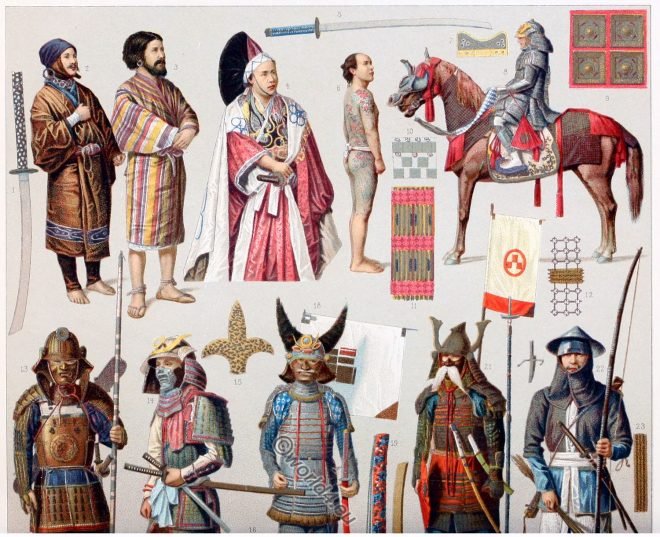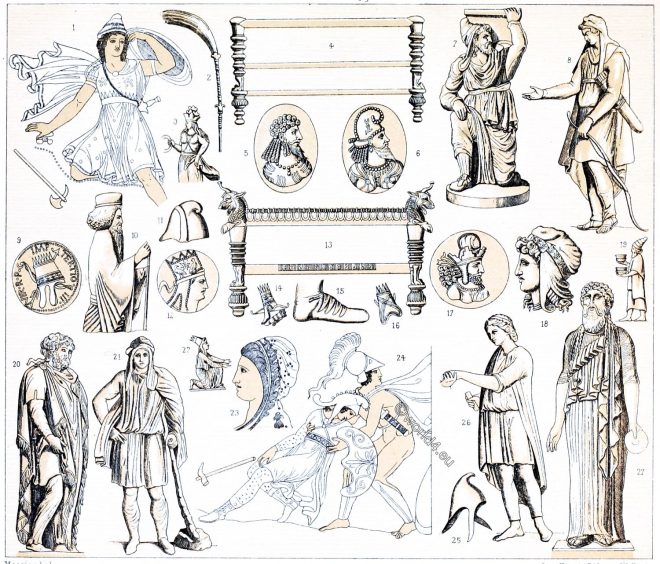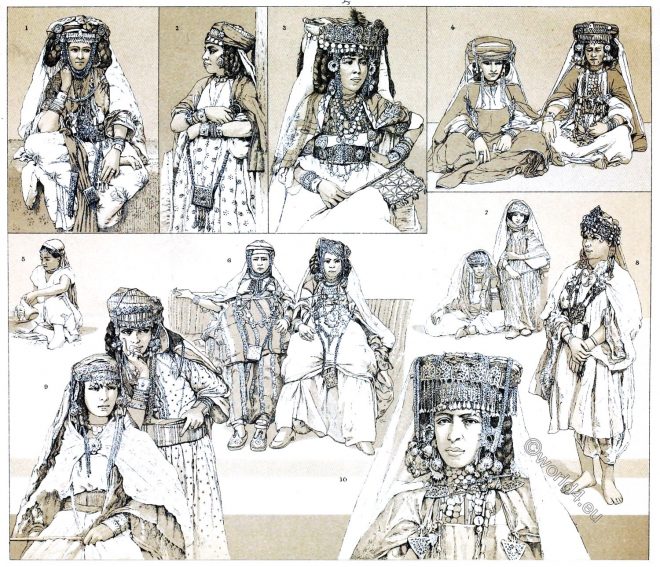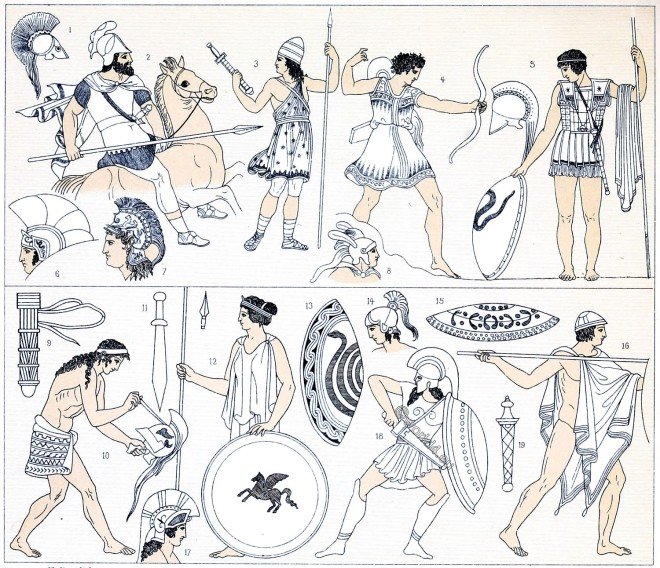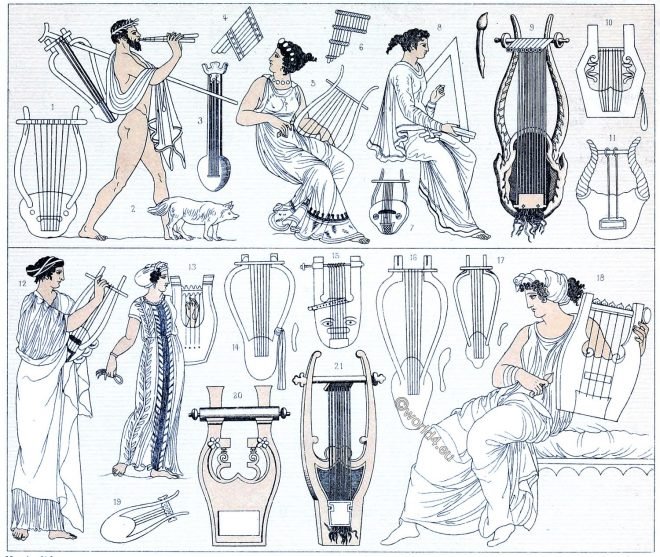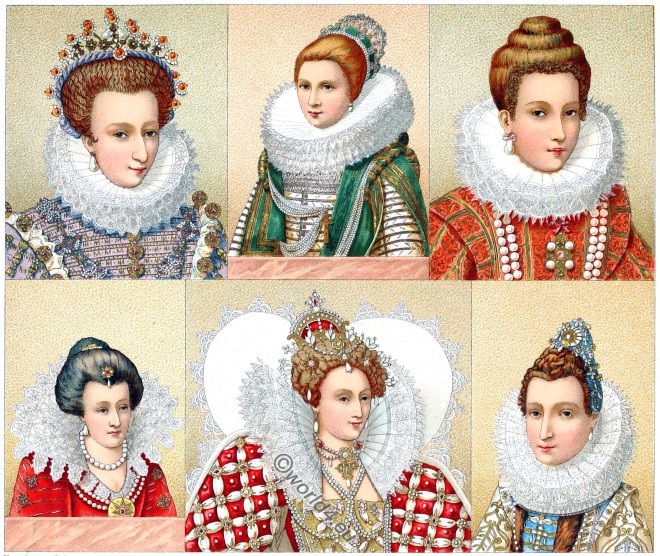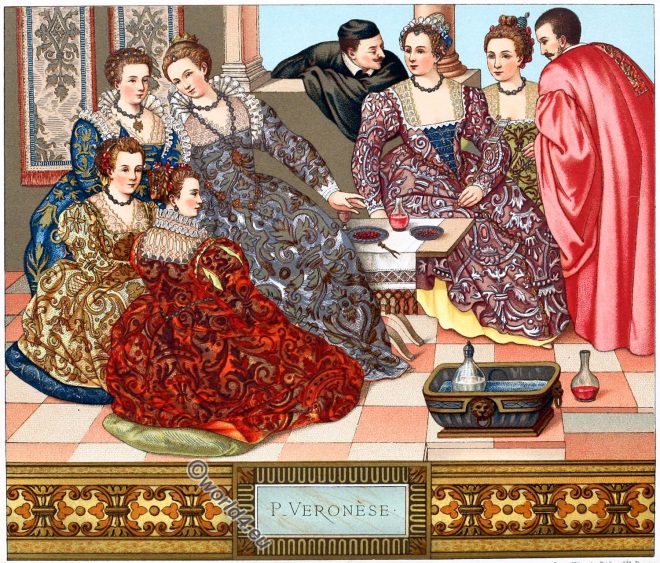Japan. The natives and the conquerors. Ainu and Japanese. Combat and fencing armor. – Various Weapons. Soldiers, Craftsmen, Coolis.
Tag: Auguste Racinet
The Costume History in Chronological Development by Auguste Racinet. Edited by Adolf Rosenberg. Berlin 1888.
Costumes of Persia and Asia Minor. Furniture. Phrygian cap.
The Phrygian cap. Armenian tiara. The weapons of the Parthians. The costumes of Persia. Armenian. Pearl embroidered mitre. Anaxyrides. Amazons. The mitre and crown. Furniture.
Berbers of Algerian Sahara. Nomadic and sedentary ethnic groups.
The majority of the population of the Sahara consists of Berbers. Her clothing is extraordinarily rich. They obtain their silk fabrics through the mediation of the caravans
Russia. Specimens of Headdress of the women of the people.
These bonnet and cap-like headpieces all originate from Old Russia and are peculiar to the Russian slaves. The specimens shown here come from the governorates of Novgorod, Kaluga, Tver and Kursk.
Scandinavian costumes from Sweden, Iceland and Lapland.
Young girl from Reykjavik, Island in festive dress. Farmer and girl in Sunday state from Dalarna County, Sweden. Young woman in summer costume from the Swedish province of Bleking. Family in Sunday state from the Parish of Leksand, Dalarna, Sweden. Winter coat of sheepskin from the Swedish Sudermanland.
The Greek military of antiquity. Spartans, Hoplites, Peltasts.
Greek military. War costumes and weapons. The Spartans, Hoplites, Peltasts. The leaders, the soldiers, the shields. Defensive weapons. Attacking weapons.
Lyras and flutes. About the musical instruments of ancient Greece.
History of ancient Greek musical instruments. The syrinx or pan flute, the harp, lyras and flutes. The lyre and the flute were the most popular musical instruments of the Greeks.
Woman’s dress. Fashion in Europe 16th & 17th century. Ruffs. Hairstyles.
The Italian fashion in France. The collars of the dresses. Metal and wooden corsets. Display of fine lingerie. The passementerie works and laces. The rules of etiquette. The expansion of ruffs.
Main Salon of a Persian Pleasure House. Type of wooden building.
The Persian residence of the Paris World Exhibition of 1878 was the type of wooden building found in Turkey, Egypt and India. The furniture consists only of divans, covered with embroidered cashmere, carpets and portières.
Italy. Fashion of the Venetian nobility in the 16th c.
The ladies’ costumes belong to the period 1575-1585.

